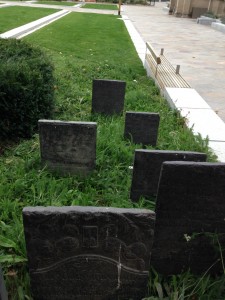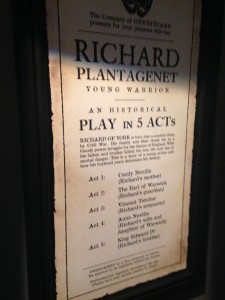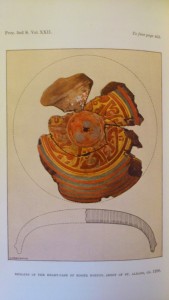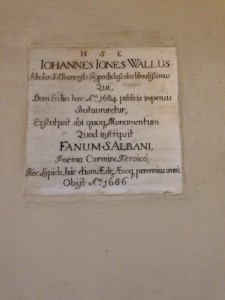In September 2015, a statue of St Junipero Serra in the courtyard of Carmel Mission was toppled to the ground and coated with green and white paint. The words “Saint of Genocide” were found written on a nearby stone.

A little more than two weeks later, in the adjoining town of Monterey, a statue of Serra was neatly beheaded. The head was recovered from a tidepool by a child in April 2016, but has yet to be reunited with the body. Over the last year, a third image of the saint, on Carmel’s Serra Avenue, has been repeatedly splashed with paint. Fifty miles up the coast, red paint was sprayed on the doors of Santa Cruz mission, accompanied by the text “Serra – St of Genocide.”

This is a familiar chain of events, though in an unexpected location. Over the last few years, I’ve thought and written quite a bit about the impact of iconoclasm in the early modern period. In particular, I’ve wondered how people in the years after the English Reformation responded to the headless statues and battered effigies in their houses of worship. Gazing at defaced images of saints in English churches and cathedrals, I’ve tried to imagine how they struck early modern eyes. But I never expected to find iconoclasm of this kind going on in my own childhood backyard.
Growing up in Carmel, California, I heard plenty both good and bad about the Franciscan missionary Junipero Serra (d. 1784). The “apostle of California” lies buried in Carmel’s Mission San Carlos Borromeo. Serra is an icon of California history and the state’s Hispanic heritage. Yet he is also a controversial figure, in light of the harsh regime imposed on the native population by the mission system. Though statues and paintings of Serra depict him as a gentle and benevolent friar, many regard him rather as the flag-bearer of a genocidal conquest. His canonisation by Pope Francis in September of last year has sparked off a campaign of image-breaking.
I’ll write in a follow-up post about my personal response to these incidents. Here I want to reflect on how they echo the iconoclasm of the English Reformation. Whether or not the perpetrators had the precedent of early modern image-breaking in mind, their actions participate in a distinct iconoclastic tradition with its own motifs, customs, and conventions.
Some key differences should be acknowledged at the outset. The ideological origins of the attacks are entirely different. The defacement of statues in Carmel and Monterey was not motivated by a Protestant distaste for holy images nor (as far as we can tell) by anti-Catholicism per se, but by anger over the historical oppression of a people. Iconoclasm in the Reformation generally did not involve a specific animus against the person depicted (which might be Jesus or God the Father), but rather against the act of depiction; in the case of Serra, the anger of the iconoclasts is very much directed at the specific individual, and at the institution that has seen fit to canonise him.
In spite of these clear differences, and in spite of the centuries that separate them, these two manifestations of the iconoclastic impulse reveal a set of common tactics and strategies.
Decapitation
Reformation assaults on sculpted images often targeted the head, either by disfiguring the face or, very commonly, by outright decapitation. A range of explanations for this preference have been suggested. As Pamela Graves has argued, iconoclasts often targeted the same parts of the body – the head and the hands – which were subject to punishment in the case of human offenders. In some cases, where images embedded in niches were difficult to remove in their entirety, cutting off their heads may have been a practical solution. Yet perhaps the greatest attraction of this mode of iconoclasm is the shocking afterimage it produces. Headless bodies demand our attention; arguably, the effect is all the more disturbing where the rest of the statue remains undamaged.

The iconoclasts who beheaded Serra’s statue in Monterey were probably in no position to topple the heavy sculpture or carry it away. Yet it was certainly in their power to break off the hands, to gouge the stonework, and to deface the long inscription at the base. Instead, the pristine condition of the remainder seems to amplify the message of the assault. (Among other things, it makes it much more difficult for passers-by to attribute the damage to weathering or neglect.) As Joseph Koerner has argued with reference to Reformation iconoclasm, the image-breakers are also image-makers.
Pulling Down
Reformation injunctions for the removal of images repeatedly speak in terms of “pulling down.” The act of toppling an image has a resonance far beyond its practical function as a step toward removal. In the pulling down of statues, Reformation reformers saw a re-enactment of the fall of the idol of Dagon in the presence of the Ark of the Covenant. (“Down went Dagon,” wrote John Aubrey wryly, reflecting on the iconoclasm of the Civil War. “Now no religion to be found.”) The pulling down of statues continues to serve as an emblem or promise of radical political change – think of the iconic fall of Saddam Hussein’s statue in Baghdad in 2003, or that of Stalin in Budapest in 1956.
The toppling of the statue of Serra in Carmel Mission undoubtedly created a more powerful visual impact than the theft of the object would have done. Although it has now been cleaned and restored to its plinth, the image of its disgrace remains seared on the web. (In a Google image search for “Carmel Serra statue,” seven of the first ten images depict the vandalism of September 2015.)
Painting
At Carmel Mission, empty paint cans were left on either side of the fallen statue, and paint has played a central role in all but one of the incidents to date. At first glance, this seems like a distinctly modern mode of defacement. Paint has been a favoured tool of other modern iconoclasts, including in a recent assault on a statue of Winston Churchill in London, and spray-paint attacks in museums and galleries. Iconoclasts in the English Reformation, who often objected to the gaudy colouration of church walls, windows, and images, do not seem to have made comparable use of paint. (Instead, they often made offending images disappear beneath a layer of whitewash.) Yet if we read this act more widely as a means of disgracing the image by coating it with inappropriate material, we can note parallels in the Reformation era, when statues might be daubed with spit, urine, or feces. Such assaults constitute a double humiliation of the image, identifying it with worthless or noxious substances, and revealing its powerlessness to resist such attacks.
The green and white paint covering the statue of Serra at Carmel Mission gives him the appearance of a fool or jester. In this respect it echoes another of the favoured tactics of Reformation iconoclasm, which was to associate reverenced images with foolery or “playing.” In 1538, the renowned Rood of Grace from Boxley Abbey was paraded through the towns of Kent, where the populace was invited to laugh at the mechanisms which caused it to smile and bow. The painting of Serra’s statues can be read as a comparable act of unveiling, revealing that there has never been anything here but a cheap show.
Writing
On at least two occasions, physical damage was supplemented by a textual gloss, identifying Serra as a “Saint of Genocide.”

The concise phrase has its own dark wit. Rather than insisting “Serra was not a saint” (though that, of course, is the real message), the graffito pretends to take the Catholic Church at its word: if Serra is a saint, this must be because the Church venerates genocide as a virtuous activity, and has appointed Serra as its patron. In its context at the missions of Carmel and Santa Cruz, the phrase both justifies the act of iconoclasm and serves as a caption to the new image that has been created. (In Renaissance terms, it creates a complete emblem, a picture with explanatory text.) Once again, there are parallels with early modern iconoclasm. When the statue of Charles I was pulled down from the porch of St Paul’s after his execution, the words Exit Tyrannum regum ultimus (Out goes the tyrant, the last of kings) appeared in the niche.
Media coverage of the attacks on Serra’s images over the last year has almost invariably referred to acts of “vandalism” rather than “iconoclasm.” This may be because the latter word would sound out of place in a news story about contemporary California, or because it might be held to dignify the violence in some way. Nevertheless, as I’ve outlined here, these actions mirror the iconoclasm of the Reformation and Civil War eras in ways that are both specific and profound. In a following post, I’ll endeavour to analyse my own reaction to these events, and ask what light this might shed on how worshippers after the Reformation responded to the afterimages of iconoclasm.






